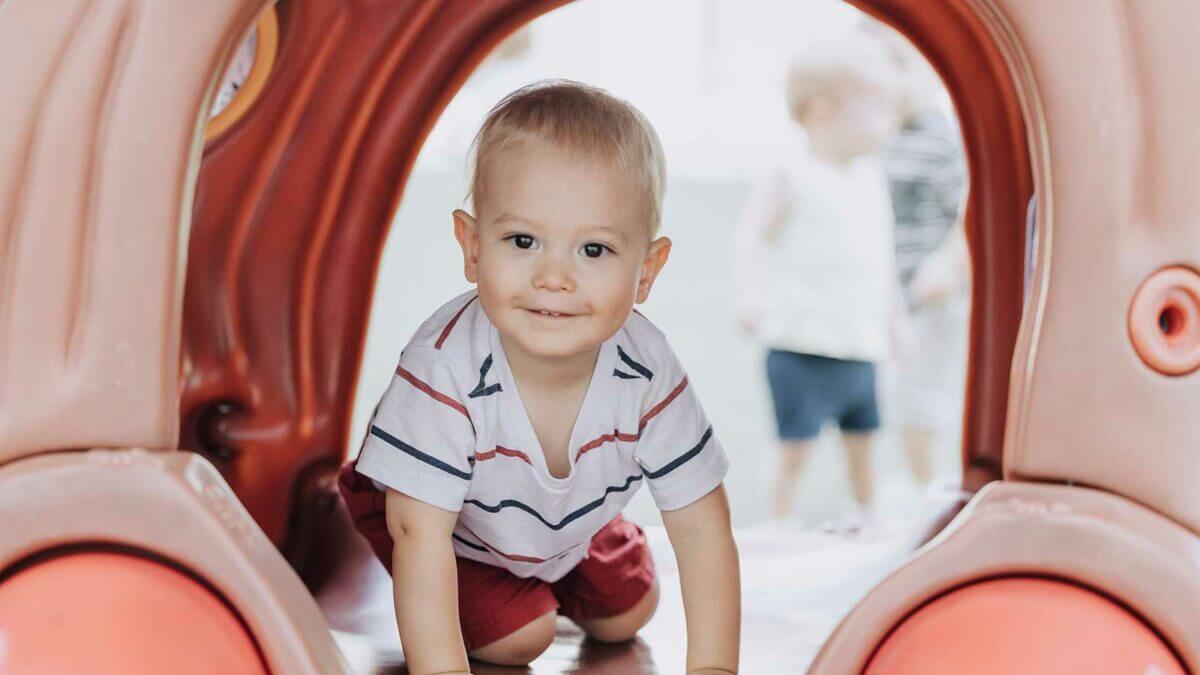Toddler Program
In their quest for independence, toddlers are developing many new skills: walking, talking, and discovering what they can do. Their sense of discovery needs to be encouraged while they develop language skills through investigative and meaningful learning experiences.
Our toddler teachers at the Treasure Coast Christian Academy are qualified professionals. Toddler Rooms are some of the school’s most energetic classrooms. In a loving and nurturing Christ-centered environment, our teachers keep a close watch as they help each child grow and explore.

The Toddler Classroom’s emphasis is on a more unified classroom schedule. Toddler teachers know that toddlers require consistency day-to-day basis to feel comfortable, happy, safe, and secure. With that in mind, our Toddler Staff set age-appropriate classroom schedules, with the learning curriculum starting each morning at 9:00 a.m. The toddler will follow set routines and will quickly acclimate to the daily schedule.
The Creative Curriculum for Infants & Toddlers and High Reach Learning serves as the framework for planning and implementing a high-quality program. Based on a monthly theme, the TCCA Toddler Staff plans age-appropriate activities that allow hands-on experiences for toddlers. Some of the activities used in the classroom are story time, books, finger plays, art activities, music, and songs. Through both the Creative Curriculum and High Reach Learning, toddlers will learn about body awareness, self-concept, language skills, and reasoning skills, along with number, shape and color recognition and the world around them.
Basic Sign Language is offered as a second language for toddlers, which is taught to supplement and enhance verbal language skills.
Program Features
- Low student-to-teacher ratio.
- Caring and nurturing professional care in a Christ-centered environment.
- Developmentally appropriate daily activities, playtime, and learning.
- Focus on sensory exploration, developing language, and communication skills.
- Regular communication between teachers and parents to keep parents informed about their child’s day.
Criteria to enter an Toddler Program
- Toddlers must be between 13 and 24 months old.
- All age appropriate immunizations must be current.
FAQS
Fruits: Cut to Bite Size
Apple Slices
Bananas
Grapes
Melon
Peaches
Pears
Pineapple
Tropical
Orange (peeled & sectioned)
Hot (Thermos) or Cold: Cut to Bite Size
Muffins
Cereals
Crackers
Macaroni & Cheese
Ravioli
Sandwiches
Ziti
Pizza Rolls
Chef Boyardee
Chili
Rice & Beans
Pasta Noodles (w/ or w/o sauce)
Pasta or Potato Salad
Bagels w/ or w/o Cream Cheese
Veggies: Cut to Bite Size
Beans
Carrots
Corn Kernels
Green Beans
Mixed Vegetables
Peas
Potatoes
Tomatoes
Veggie Salad
Sandwiches: Cut to Bite Size
Peanut Butter & Jelly
Peanut Butter & Banana
Peanut Butter & Honey
Grilled Cheese
Wrap
Tuna, Chicken & Egg Salad
Meats: Cut to Bite Size
Chicken/Nuggets
How to Wean a Baby Off Pacifiers
By Maggie McCormick, eHow Contributor www.ehow.com
- Restrict pacifier use to bedtime only. Don’t let your child have a pacifier in their mouth during the daytime when they’re playing. Instead, only let them have the pacifier when they’re sleeping for comfort.
- Dip the pacifier in something that has a bad taste. This could be something like coffee, vinegar, etc. When your child puts it in their mouth, they won’t like the taste.
- Cut a small bit off of the pacifier making it less desirable to suck. But some children just like having something in their mouth. If this is the case with your child, you can gradually cut more off until there’s nothing left to put in their mouth.
- Replace the pacifier with something different for comfort. You may need to train them to receive comfort in a different way.
- Take the pacifier away. After reducing the time of use of the pacifier and helping them find a new lovey, you can take the pacifier away completely.
Every child is different. Some will have an easy time letting it go. For other children, this will be a challenge. However you decide to wean your child off the pacifier, keep in mind that the easiest time to do this would be a Friday evening so that they have 3 nap periods and 3 bedtimes to practice before doing this at school.

